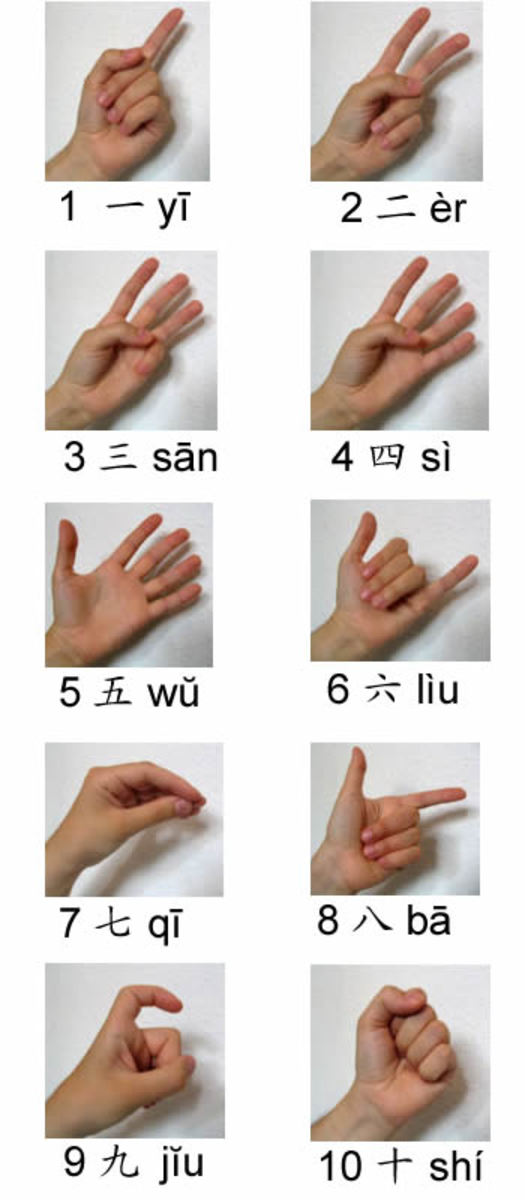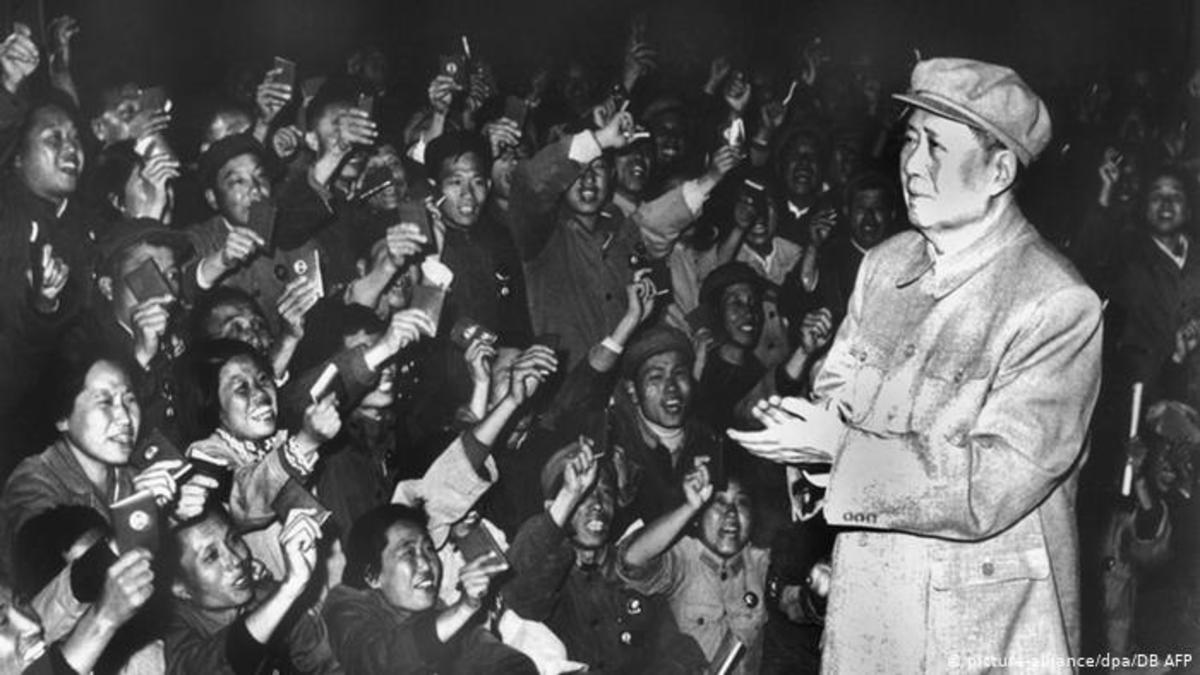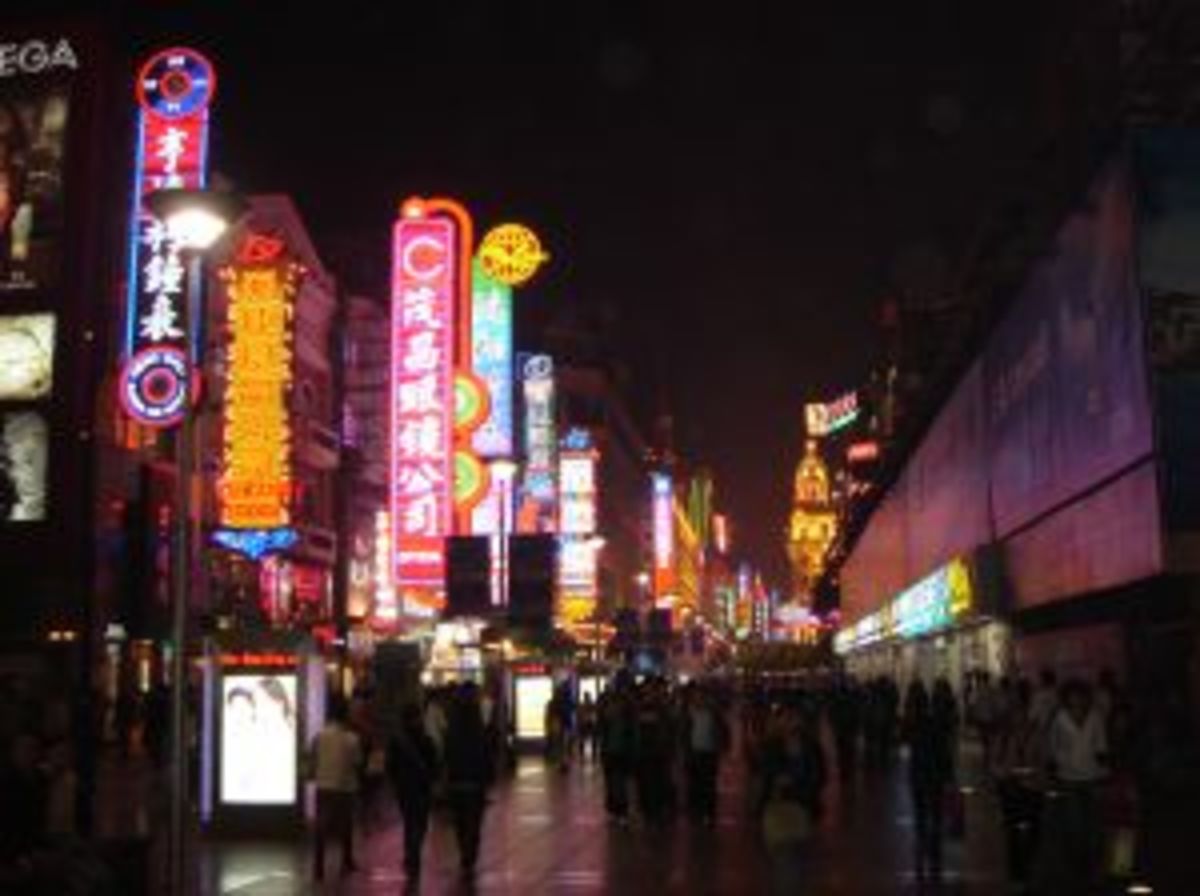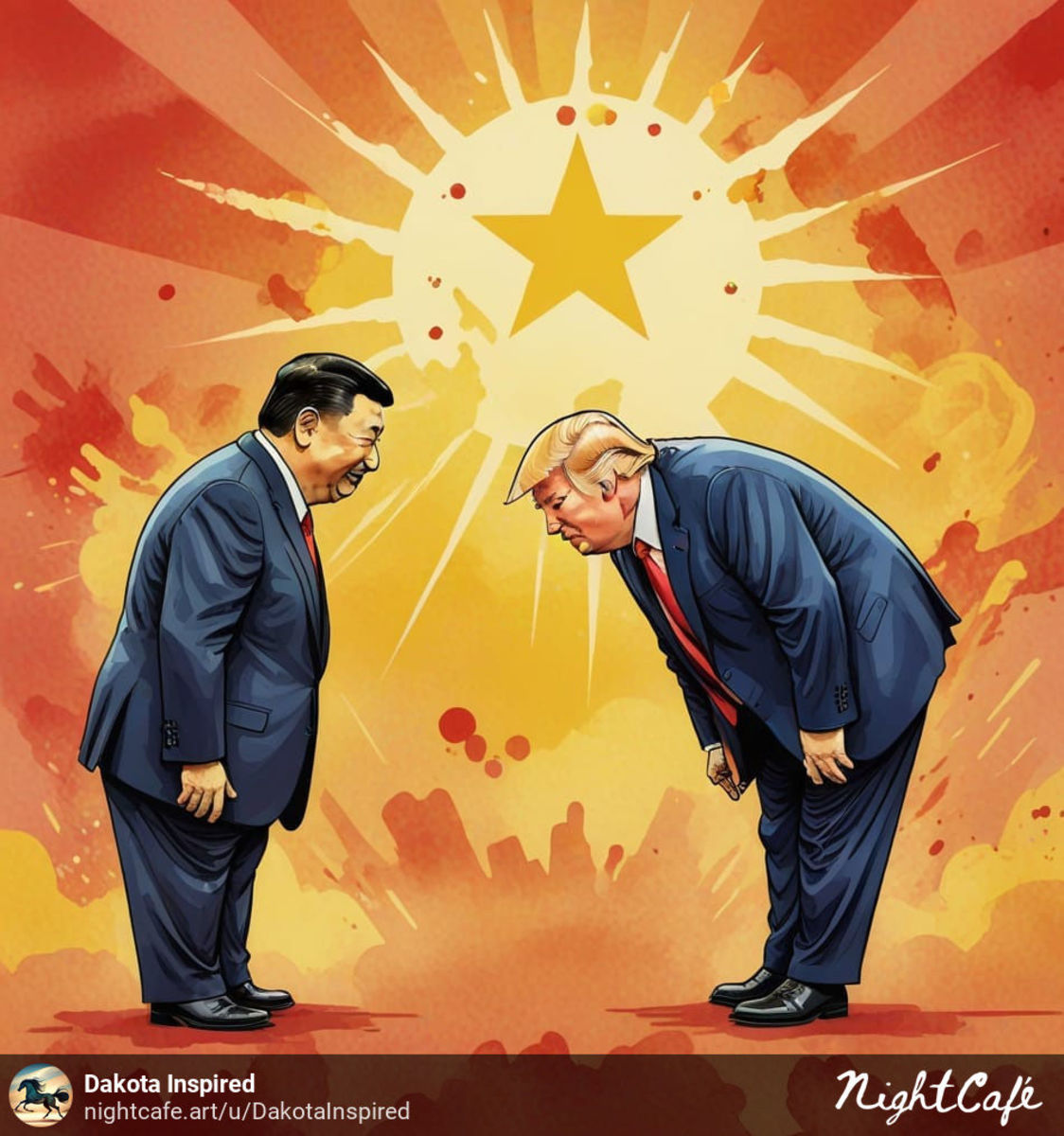Chinese Culture
China is a great country is seldom disputed, not only because of the size of the land it occupies, but also of its culture and massive economic power. In Asia, it is surpassed only by Russia and easily dwarfs all other countries that borders. Not surprisingly, its landscape, climate, culture are highly varied.

Man's Pigtail
China began to be referred the last century (late 19th and early 20th centuries) as 'the sick man of Asia', bullied and exploited by colonial powers as they raced to carve out their slices of the world. The term 'sick man of Asia' corresponds to 'sick man of Europe', referring to the weakening Ottoman Empire during the same period. It was also used as a derogatory term for the Chinese by Japanese invaders during the Second World War and the years immediately preceding it, in which Japan occupied sections of China.
One of features of 'Sick Man of Asia' is pigtail. Since the occupying of Qing Dynasty, Chinese started to wear pigtails. The pigtails are in fact a Manchurian hair-style. They shaved the front part of the head, from forehead to about the middle of his head, braided the rest of the hair on the back of their head into a single queue or 'pigtail'.
The Manchus imposed their hair style to the Han-Chinese, having pigtails was a policy used to effectively rule China. Anyone found not growing pigtails will be executed, 'shave your head or lose your head'. This policy was a practical way for the Manchus to determine on the battlefield and elsewhere if a given Chinese was loyal to the new dynasty. A quick visual inspection told them if a given Chinese was loyal to the Qing or not. A Chinese who had adopted the Manchu hairstyle was, of course, considered loyal. Similarly, Chinese were also forced to adopt Manchu costume. Therefore, a practical way to determine who was loyal and who was not would have indeed been helpful. In this way Chinese losing its true identity, and forced themselves to act lower.
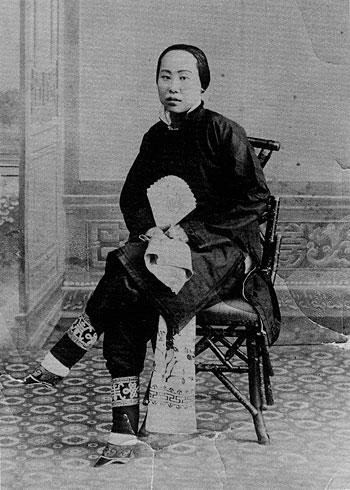
Woman's Footbinding
The second feature of 'Sick Man of Asia' was revealed indirectly by his partner, woman's Footbinding. Pigtails was imposed by Manchus, but footbinding is a genuine Han custom. The Practice of Foot Binding began in the Tang Dynasty(618-907). Tang Dancers would bind their feet with long strips of cloth to help them take the small, light steps which were demanded by the dancing style. Manchus who conquered China in the 17th century tried without success to abolish the practice. Manchu women were forbidden from binding their feet or the feet of their daughters. Bound feet became an important differentiating marker between Manchu and Han.
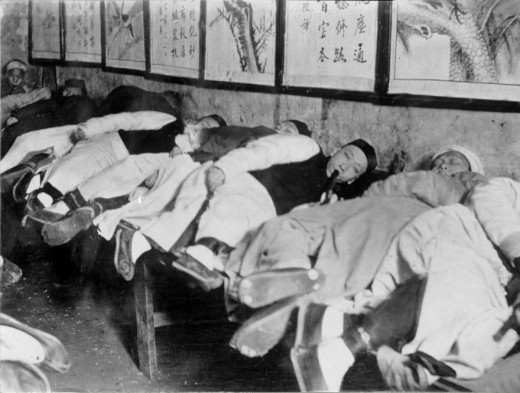
Opium Addicts and Smoking
The third feature of "sick man of Asia" is drug addictive.
By the 1830's, the English had become the major drug-trafficking criminal organization in the world; very few drug cartels of the twentieth century can even touch the England of the early nineteenth century in sheer size of criminality. Growing opium in India, the East India Company shipped tons of opium into Canton (Now Guangdong Province)which it traded for Chinese manufactured goods and for tea. This trade had produced, quite literally, a country filled with drug addicts, as opium parlors proliferated all throughout China in the early part of the nineteenth century. This trafficking, it should be stressed, was a criminal activity after 1836, but the British traders generously bribed Canton officials in order to keep the opium traffic flowing. The effects on Chinese society were devastating. In fact, there are few periods in Chinese history that approach the early nineteenth century in terms of pure human misery and tragedy.
Another highly addictive habbit of Chinese is smoking. Now, nearly three-quarters of all Chinese men are smokers, and China has the largest number of smoking-related deaths in the world. Because of a sharp increase in cigarette sales in the last 30 years, around 2,000 people a day are currently dying of smoking in China. By 2050, the researchers expect this number could rise to 8,000 a day - some three million people a year.
The worst thing of all is the ignorance of harms done by smoking, Surveys showed two-thirds of Chinese people think smoking does little or no harm, 60% think it does not cause lung cancer and 96% do not know that it causes heart disease. Despite Chinese health officials' backing for efforts to reduce tobacco consumption, treasury officials might find it difficult to say no to the huge revenue they can reap from the cigarette industry.



